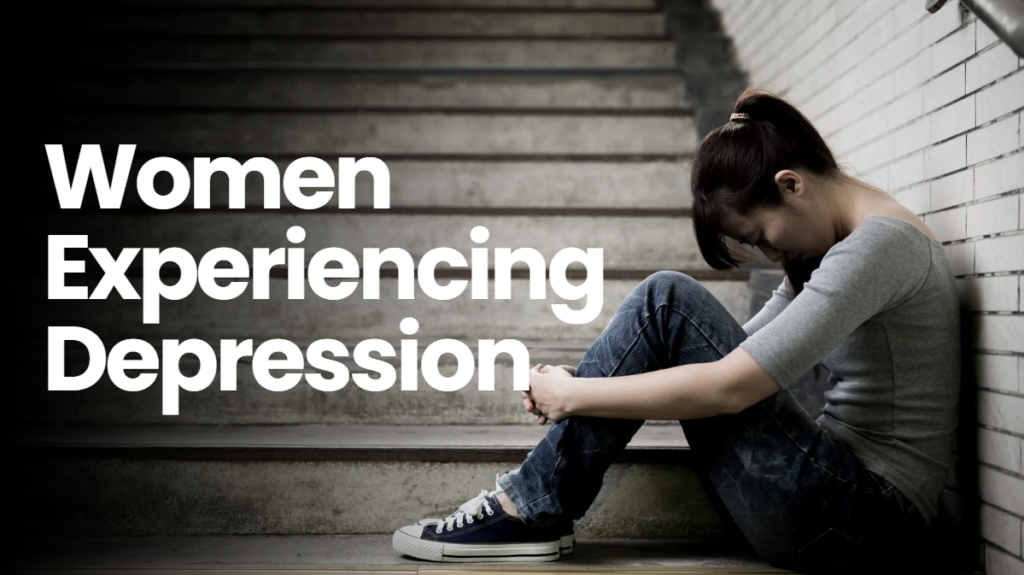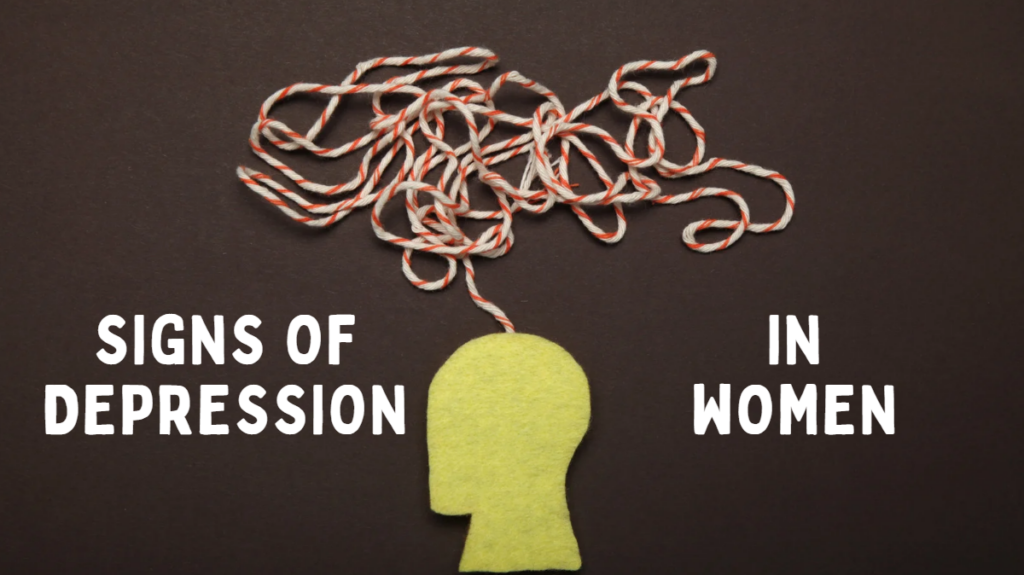
Depression in women is both common and often misunderstood. While everyone experiences sadness, depression goes beyond a bad day—it deeply affects emotions, thoughts, physical health, and daily life. Women are almost twice as likely as men to experience depression, yet their struggles are sometimes dismissed as “hormonal” or “emotional.”
This guide explores what depression in women really is, how common it is, its signs, causes, complications, treatments, and how you can support women going through it.
What Is Depression in Women?
Depression in women is more than just feeling sad—it’s a complex medical and psychological condition.
Clinically, depression (major depressive disorder) is defined as a mood disorder that causes persistent feelings of sadness, emptiness, and a loss of interest in activities once enjoyed. But when we look specifically at women, depression often has additional layers shaped by biology, hormones, life events, and social expectations.
Unlike temporary sadness, depression lingers and interferes with daily life—work, relationships, sleep, and even physical health. Women often experience overlapping mental and physical symptoms, which may cause doctors to mistake it for thyroid issues, anemia, or “just stress.”
Primary care providers play a key role in identifying depression in women. Regular checkups, screenings, and honest conversations can reveal patterns that women themselves might downplay or normalize.
How Common is Depression in Women?
Research consistently shows that women are significantly more likely than men to experience depression over their lifetimes—not because they are weaker, but due to a mix of biological, hormonal, social, and cultural factors.
Some of the most reliable statistics:
- Globally, depression affects an estimated 5.7% of adults, with higher rates in women (~6.9%) compared to men (~4.6%).
- More than 10% of pregnant women and women who have recently given birth experience some level of depression.
- In the United States, a past‐year major depressive episode was reported in about 10.3% of females vs 6.2% of males.
- Postpartum depression is estimated in many settings at around 12% for all depression during the first year after birth, with major depression nearer 7%.
Globally, depression is also one of the leading causes of disability, especially for women—impacting work, relationships, health, and overall quality of life.
Signs of Depression in Women

Recognizing the signs of depression in women is the first step toward healing. Symptoms may be emotional, cognitive, physical, or behavioral.
Emotional Signs
- Persistent sadness, tearfulness, or frequent crying
- Feelings of worthlessness, guilt, or hopelessness
- Irritability or anger over small things
Cognitive Signs
- Difficulty concentrating or remembering things
- Indecisiveness, constant self-doubt
- Negative thinking patterns, rumination
Physical Signs
- Fatigue or low energy, even with rest
- Sleep disturbances: insomnia or oversleeping
- Appetite and weight changes
- Unexplained headaches, muscle pain, or stomach issues
Behavioral Signs
- Withdrawing from friends and family
- Loss of interest in hobbies and activities once enjoyed
- Decline in work or school performance
- Turning to alcohol, food, or other coping behaviors
Depression in Women Causes

Depression in women has multiple causes—it’s rarely just one thing.
Biological Factors
- Hormonal fluctuations: Shifts during menstruation, pregnancy, postpartum, and menopause play a significant role.
- Genetics: Family history of depression increases risk.
- Chronic illness: Conditions such as thyroid disease, diabetes, or autoimmune disorders can trigger depressive symptoms.
Psychological Factors
- Trauma or history of abuse
- Personality traits like perfectionism or high self-criticism
- Low self-esteem or chronic stress coping patterns
Social and Cultural Factors
- Gender inequality and discrimination
- Caregiving responsibilities for children or elderly parents
- Financial stress, workplace pressures, or lack of support
- Cultural expectations that women should “handle it all”
Depression in Women Versus Men

Depression affects both women and men, but it can manifest differently due to biological, psychological, and social factors. Understanding these differences is key to recognizing and addressing depression in both genders.
Biological Factors:
- Women: Hormonal fluctuations (e.g., menstruation, pregnancy, menopause) contribute significantly to mood changes and increase vulnerability to depression.
- Men: While hormonal changes, like low testosterone, can influence mood, the link to depression is generally less direct than in women.
Psychological Factors:
- Women: Women often internalize emotions, leading to feelings of guilt and worthlessness, which may increase the risk of depression.
- Men: Men are more likely to externalize emotions, expressing anger or irritability, which can mask underlying depression.
Sociocultural Influences:
- Women: The pressure of fulfilling multiple roles (caregiver, worker, homemaker) and facing societal expectations or discrimination can contribute to depression.
- Men: Social expectations to suppress emotions often discourage men from seeking help, making depression less visible and harder to address.
Treatment and Response:
- Women: Women are more likely to seek help for depression, including therapy and medication, and are generally more open to mental health care.
- Men: Men are less likely to seek treatment due to stigma, and when they do, depression may be accompanied by substance abuse or other symptoms, complicating diagnosis.
Impact of Depression:
- Women: Depression in women is often linked to anxiety, eating disorders, and relationship difficulties.
- Men: Depression in men is more likely to lead to physical health issues, substance abuse, and higher suicide risk, particularly when untreated.
While depression affects both genders, each faces unique challenges. Recognizing these differences helps ensure better prevention and treatment for all.
The Types of Depression That Are Unique to Women

Certain types of depression are uniquely tied to women’s biological and hormonal experiences.
Premenstrual Dysphoric Disorder (PMDD)
- A severe form of premenstrual syndrome (PMS).
- Causes intense mood swings, irritability, and depression symptoms in the luteal phase of the menstrual cycle.
Perinatal and Postpartum Depression
- Depression during pregnancy (perinatal) or after childbirth (postpartum).
- Symptoms go beyond “baby blues” and include deep sadness, anxiety, or difficulty bonding with the baby.
- Affects about 1 in 7 new mothers.
Perimenopausal Depression
- Occurs during the transition to menopause due to fluctuating estrogen levels.
- Symptoms may include mood swings, fatigue, and sleep disturbances.
Complications of Untreated Depression in Women
Leaving depression untreated has serious consequences.
- Physical health risks: Heart disease, obesity, weakened immune system, and chronic pain.
- Impact on family: Strained relationships, difficulty parenting, or increased risk of depression in children.
- Workplace challenges: Absenteeism, reduced productivity, and career setbacks.
- Mental health risks: Increased likelihood of anxiety disorders, substance abuse, or self-harm.
In severe cases, untreated depression can lead to suicidal thoughts or attempts. This underscores the urgent need for timely diagnosis and treatment.
When to Seek Help?
Knowing when to seek help can save lives. Depression often begins subtly—with exhaustion, irritability, or mood changes that seem like “just stress”—but when these feelings linger or disrupt daily life, it’s time to reach out for professional support.
Women should consider reaching out for help if any of the following occur:
- Symptoms last more than two weeks.
- Daily functioning is affected at work, school, or home.
- They feel persistently hopeless, worthless, or guilty.
- There are thoughts of self-harm or suicide.
- Sleep and appetite patterns change drastically.
- Interest in things once enjoyed is lost.
- Persistent physical symptoms without a clear cause.
It’s best to start with a primary care provider, who can assess physical health, rule out conditions like thyroid disorders or hormonal imbalances, and refer you to a qualified mental health professional such as a psychiatrist, psychologist, or therapist.
Depression in Women Treatment

Depression is treatable through a combination of therapies, lifestyle changes, and, when necessary, medication. The goal isn’t just to reduce symptoms—it’s to restore balance, resilience, and a sense of self.
1. Psychotherapy
Also known as Talk Therapy, this provides a safe, judgment-free space to explore feelings, build coping tools, and address root causes of distress. Common and effective approaches include:
- Cognitive Behavioral Therapy (CBT): Helps identify and change negative thought patterns that contribute to feelings of sadness or worthlessness. Women learn to challenge self-critical thoughts and replace them with realistic, compassionate perspectives.
- Interpersonal Therapy (IPT): Focuses on improving relationships and communication. This approach is especially helpful for women navigating role changes, grief, or interpersonal stress that can trigger or worsen depression.
- Dialectical Behavior Therapy (DBT): Originally developed for emotional regulation, DBT teaches mindfulness, distress tolerance, and interpersonal effectiveness—skills that help women manage overwhelming emotions and improve stability.
2. Medications
It helps rebalance brain chemistry and ease the intensity of symptoms so therapy and lifestyle changes can work more effectively.
- Antidepressants (SSRIs, SNRIs, and others): These medications help regulate serotonin and norepinephrine, brain chemicals involved in mood. While highly effective, they should always be managed by a healthcare provider, particularly during pregnancy or breastfeeding, to ensure safety for both mother and child.
- Hormonal treatments: In certain cases—such as perimenopausal depression, postpartum depression, or PMDD (premenstrual dysphoric disorder)—hormonal therapies may help stabilize mood fluctuations connected to hormonal changes.
It’s essential to work closely with a provider to find the right medication and dosage, as response and side effects can vary from person to person.
3. Lifestyle and Holistic Approaches
A holistic treatment plan strengthens both the mind and body, addressing depression from multiple angles:
- Regular exercise, balanced diet, and proper sleep hygiene: Physical activity boosts endorphins, nutrition supports brain health, and restorative sleep resets emotional balance—all foundational to recovery.
- Stress management techniques like mindfulness: These practices calm the nervous system, reduce rumination, and help women reconnect with their bodies and emotions.
- Support groups and community resources: Sharing experiences with others who understand can bring validation and hope. Peer support helps combat isolation and fosters accountability in recovery.
- Limiting alcohol and substance use: These can temporarily numb pain but often worsen depressive symptoms over time. Healthy coping strategies create a more stable path to healing.
How to Support a Woman Experiencing Depression

Support can make the difference between suffering in silence and starting recovery.
Ways to help include:
- Listening without judgment or interruption.
- Encouraging professional help while offering practical assistance (childcare, meals, daily errands).
- Avoiding harmful phrases like “just get over it” or “others have it worse.”
- Being patient—recovery takes time and persistence.
- Sharing resources such as therapy directories or crisis hotlines.
Small acts of compassion—checking in with a message, offering to walk together, or simply sitting in silence—can show women they’re not alone.
Turning Awareness Into Action
Depression in women is real, common, and treatable. It affects millions of women worldwide, yet healing is always possible with awareness, compassion, and proper care. This article explored its signs, causes, unique forms, differences from men’s experiences, and ways to seek help or offer support. The message is clear: depression is not a weakness—it’s a health condition that deserves understanding, treatment, and hope for recovery.
At EmpowHer Psychiatry and Wellness, that healing journey begins with compassionate, personalized care. Located at 1155 W. Chestnut St., Suite 1D, Union, NJ 07083, and reachable at 908-315-9885, EmpowHer is more than a psychiatry practice—it’s a safe and welcoming space where women are heard, supported, and empowered. Their team of dedicated professionals combines evidence-based treatment with a holistic, mind-body approach designed to help women feel whole again. Whether you’re taking your first step toward help or continuing your recovery, EmpowHer is here to walk beside you every step of the way—because every woman deserves the chance to heal and thrive. Contact us Today!

